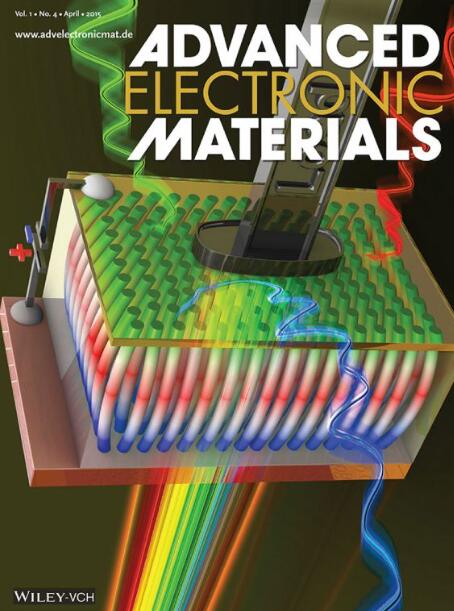Boosting Stochasticity in Ovonic Threshold Switches Through Cryogenic First Firing for Fast and Reliable Entropy Generation
IF 5.3
2区 材料科学
Q2 MATERIALS SCIENCE, MULTIDISCIPLINARY
引用次数: 0
Abstract
As encryption demands at the edges grow, volatile switching devices have emerged as promising candidates for entropy sources because of their inherent stochastic properties, offering fast, energy‐efficient operation and a minimal footprint. Although most studies have focused on exploiting inherent stochasticity, efforts to analyze and optimize these devices to enhance their randomness remain scarce. In this study, the stochastic switching characteristics of Ovonic Threshold Switch (OTS) devices by controlling the first firing temperatures to amplify their inherent stochasticity are explored. It is demonstrated that firing at cryogenic temperatures (77 K) induces field‐dominant firing and a considerable increase in traps within the device. These additional traps lead to a substantial enhancement in switching variability, with the switching time fluctuation increasing up to four times compared to the first firing temperature of 298 K. Furthermore, a reference‐free entropy‐harvesting method is proposed that ensures robust and stable operation even under cycling degradation. Based on this approach, the OTS devices that undergo first firing at cryogenic temperatures achieve stable entropy generation at speeds exceeding 20 Mbit s

低温首次点火提高卵子阈值开关的随机性,实现快速可靠的熵生成
随着边缘加密需求的增长,易失性开关器件因其固有的随机特性,提供快速,节能的操作和最小的占地面积而成为熵源的有希望的候选者。尽管大多数研究都集中在利用固有的随机性,但分析和优化这些设备以增强其随机性的努力仍然很少。本研究探讨了通过控制首燃温度来放大Ovonic Threshold Switch (OTS)器件的随机开关特性。结果表明,在低温(77 K)下烧制可诱导场主导型烧制,并且器件内陷阱数量显著增加。这些额外的陷阱导致开关可变性的显著增强,与第一次燃烧温度298 K相比,开关时间波动增加了四倍。此外,提出了一种无参考熵收集方法,即使在循环退化下也能保证鲁棒稳定的运行。基于这种方法,在低温下进行首次烧制的OTS器件在超过20mbps−1的速度下实现了稳定的熵生成。这项研究证明了优化OTS器件的潜力,以满足高级密码系统中对快速和节能熵源日益增长的需求。
本文章由计算机程序翻译,如有差异,请以英文原文为准。
求助全文
约1分钟内获得全文
求助全文
来源期刊

Advanced Electronic Materials
NANOSCIENCE & NANOTECHNOLOGYMATERIALS SCIE-MATERIALS SCIENCE, MULTIDISCIPLINARY
CiteScore
11.00
自引率
3.20%
发文量
433
期刊介绍:
Advanced Electronic Materials is an interdisciplinary forum for peer-reviewed, high-quality, high-impact research in the fields of materials science, physics, and engineering of electronic and magnetic materials. It includes research on physics and physical properties of electronic and magnetic materials, spintronics, electronics, device physics and engineering, micro- and nano-electromechanical systems, and organic electronics, in addition to fundamental research.
 求助内容:
求助内容: 应助结果提醒方式:
应助结果提醒方式:


